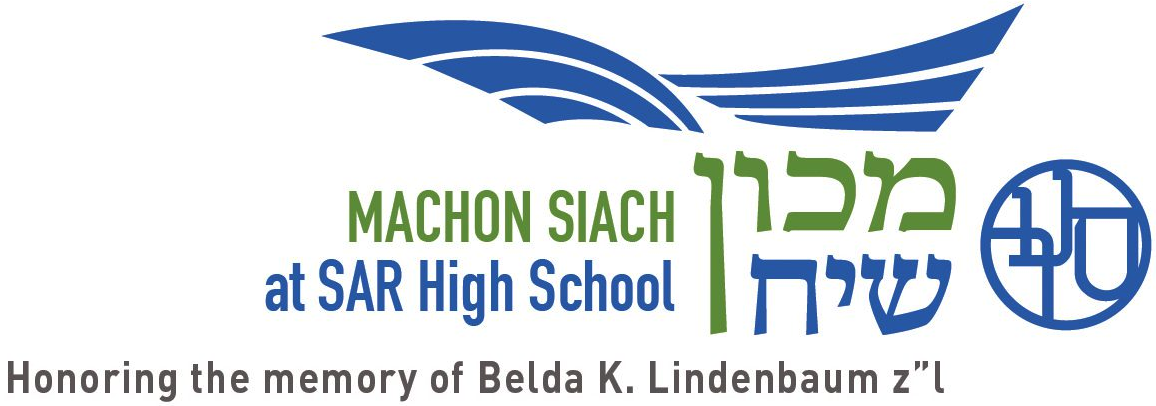
Hands-on Halakha Learning
I remember how intimidated I was the first time I got my kitchen ready for Pesach. I had recently received my rabbinic ordination and was familiar with all of the pertinent halakhot, but I still stared at our oven, stovetop and counters with trepidation. I had learned what I needed to know, but I had never actually put my knowledge into practice. With Pesach coming whether I liked it or not, I bit the bullet and kashered the kitchen. And guess what? The task was not as daunting as I had believed. I began to wonder how much different the experience would have been had I put the halakhot into practice while learning them instead of only afterwards. Why couldn’t students’ halakha education be augmented and enriched much the same way that science education is supplemented by work in the lab? The experience was the inspiration for a program I am piloting this year as part of Machon Siach’s Innovation Lab: Hands-on Halakha.
Hands-on Halakha has been integrated into some of SAR’s Judaic Studies classes, bringing the study of halakha to life for our students. We know, from earliest childhood education to our own adult learning, that hands-on activities lead to greater levels of engagement, enable students to practice what they have learned in the classroom, encourage creativity and lead to greater retention of the curriculum. Bringing my own practices of Pesach kashrut and pedagogical theories of knowledge retention to halakha classes has created meaningful experiences for our students this year.
Each halakha lab begins with five minutes of chavruta learning of source material related to the lesson and a brief follow-up discussion. The first of our hands-on sessions involved learning the Gemara from Mashekhet Kiddushin (41a), which teaches the principle of mitzvah bo yoter mi’beshelucho, that even though certain mitzvot are valid if performed by an agent, it is more fitting for a person to do the mitzvah on their own. The Gemara then relates that Rav Safra would himself cook the head of an animal on Shabbat eve to prepare it to be eaten on Shabbat, and that – although the work could have been performed by others – Rava would salt a fish himself in order to fulfill the mitzvah to prepare for Shabbat. In their chavrutot, students discussed why they think it is better to do a mitzvah on their own rather than have it done by others even though both are equally halakhically valid.
Following this discussion, students followed in the footsteps of Rav Safra and Rava as they learned the laws of kavod and oneg Shabbat. In the classroom, students learned that kavod Shabbat refers to the things one does in preparation for Shabbat while oneg Shabbat refers to the things one does on Shabbat to enjoy and enhance the Shabbat experience. Students were asked to share a time when they prepared something themselves for Shabbat and to describe how it impacted their Shabbat experience. Some students discussed setting the table for Shabbat while others mentioned helping their parents cook food for Shabbat meals. All described these experiences in a similar fashion: when they took an active role in their family’s preparation for Shabbat, Shabbat became more meaningful and memorable. They also considered whether this principle extends to other areas of their lives besides Shabbat preparation; are there things that are better when they do them independently rather than have others do them?
Next, we tested this theory in our cafeteria. Students were each given a mason jar and the ingredients necessary for making their own matjes herring. Students prepared classic matjes with sunflower oil and onions as well as a spicy matjes with jalapenos and cilantro. In anticipation of the possibility that some students’ Shabbat experience would not be enhanced through the preparation and consumption of herring, students were also given the option to pickle cucumbers for Shabbat. To measure the impact of their hands-on practice on their Shabbat experience, students filled out a follow-up questionnaire. 87.5% of the students responded that eating their herring or pickles enhanced their Shabbat. One student reported that “It was a great time and a valuable bonding experience with my class while also enhancing my Shabbat.” Another comment confirmed my suspicion that the herring activity was great shtick but may have been more appropriate for a different generation: “I bonded with my grandparents over it, and they really loved it.” One student wrote to me that, with relatives visiting for Shabbat, “we broke into the herring to give it a try – and it was a massive hit! Everyone wants the recipe now and is going to make it.”
As we have continued to experiment with hands-on halakhic learning, students learning the laws of kashrut explored different methods for checking fruits and vegetables for bugs to determine which were most effective while also examining the relevant Gemara texts that discuss these issues. Teachers have used hands-on practices as an opportunity to discuss the complex issue of when one family’s practice differs from another family’s practice, and when a family’s practice appears to be misaligned with the halakhic practice presented in class.
As we approached Pesach just a few weeks ago, students kashered kiddush cups in advance of the holiday, replicating, on a small scale, the moment in my own life that prompted me to think about bringing halakhic learning to life. By putting what students learn in class into practice, I hope that when our students look at their countertops as Pesach approaches each year, they will do so with a lot more confidence than I did.


